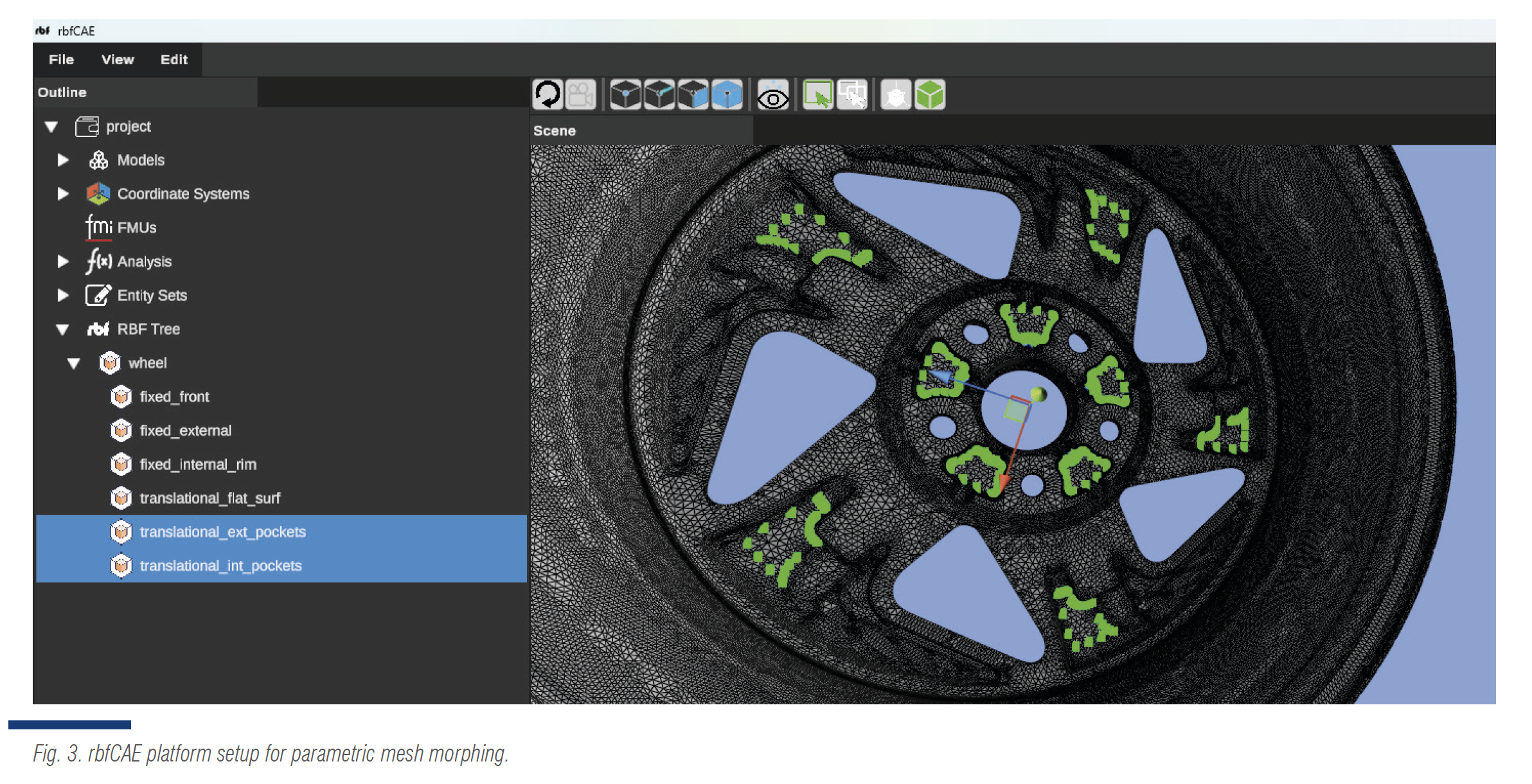A new article published in the Summer 2025 issue of Futurities spotlights a breakthrough in multi-physics optimization for automotive wheel design, featuring a powerful collaboration between RBF Morph, the University of Rome “Tor Vergata”, and Nissan Technical Centre Europe.
The publication, titled “Smarter wheels: How multi-physics optimization is shaping the future of automotive design”, was co-authored by Marco Evangelos Biancolini (University of Rome “Tor Vergata”), Emanuele Di Meo and Riccardo Serenella (RBF Morph), and Claudio Ponzo, Sarwar Ahmed, Adam Collins, and Raff Russo (Nissan Technical Centre Europe).
The study introduces a comprehensive simulation-driven workflow combining structural and aerodynamic performance with aesthetic design in the development of EV wheels. Central to the project is rbfCAE, the latest platform by RBF Morph, which uses advanced mesh morphing to enable seamless integration of finite element and CFD simulations—without remeshing.
Two innovative optimization strategies were tested: parametric mesh morphing and the biologically inspired BGM (Biological Growth Method). Both approaches succeeded in reducing wheel mass by 400g while maintaining structural integrity and enhancing aerodynamic performance.
This pioneering work, also presented at the 2025 NAFEMS World Congress, exemplifies how digital design tools and collaborative engineering can meet the complex demands of modern vehicle design—particularly for the electric mobility sector.
Read the full article.



